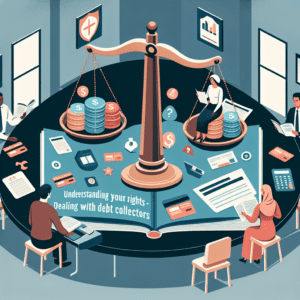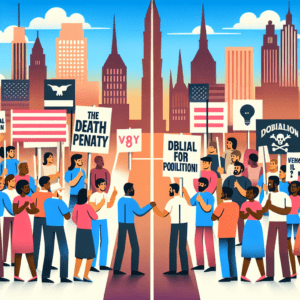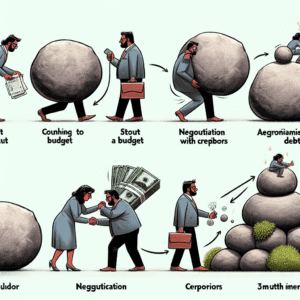“New Laws in 2025: Shaping Your Future, One Policy at a Time.”
Changes in Tax Regulations: How the 2025 Laws Impact Your Finances
The year 2025 brings significant changes to tax regulations, affecting individuals and businesses alike. As governments seek to modernize tax codes and address economic challenges, these new laws will have a direct impact on financial planning, disposable income, and overall economic stability. Understanding these changes is essential for taxpayers to navigate their financial responsibilities effectively and take advantage of any available benefits.
One of the most notable adjustments involves income tax brackets and rates. In an effort to provide relief to middle-income earners, some jurisdictions have revised their tax brackets, potentially lowering the tax burden for certain groups. However, higher-income individuals may see an increase in their tax obligations as governments aim to generate additional revenue. These modifications could influence financial decisions, such as investment strategies and retirement planning, as taxpayers assess how to optimize their earnings under the new system.
In addition to income tax changes, deductions and credits have also been revised. Some previously available deductions may be reduced or eliminated, while new credits have been introduced to encourage specific behaviors, such as energy-efficient home improvements or investments in sustainable businesses. These adjustments could impact household budgets, as taxpayers may need to reconsider their spending and saving habits to maximize their tax benefits. For instance, families with dependents may find that child tax credits have been expanded, providing additional financial relief, whereas other deductions related to work-from-home expenses might be scaled back.
Another significant change involves corporate tax policies, which could have indirect effects on individual taxpayers. Governments are implementing measures to close loopholes and ensure that multinational corporations contribute a fair share of taxes. While this may lead to increased tax liabilities for businesses, it could also result in greater public revenue, potentially funding social programs or infrastructure projects. However, companies facing higher tax burdens may adjust their pricing strategies, which could lead to increased costs for consumers. As a result, individuals may experience changes in the prices of goods and services, affecting their overall cost of living.
Furthermore, tax compliance and reporting requirements have been updated to enhance transparency and reduce tax evasion. Digital tax filing systems are becoming more sophisticated, with stricter regulations on cryptocurrency transactions and foreign income reporting. Taxpayers who engage in digital asset trading or hold offshore accounts must now adhere to more stringent disclosure requirements, ensuring that all income is properly reported. While these measures aim to create a fairer tax system, they also necessitate greater diligence from individuals and businesses to avoid penalties for non-compliance.
For those planning for retirement, adjustments to tax-advantaged savings accounts may also play a crucial role in financial decision-making. Contribution limits for retirement accounts have been modified, potentially allowing individuals to save more for their future while benefiting from tax incentives. However, changes to withdrawal rules and taxation of retirement income could influence when and how retirees access their savings. Understanding these updates is essential for long-term financial security, as strategic planning can help maximize retirement benefits while minimizing tax liabilities.
As these new tax laws take effect, staying informed and seeking professional advice can help individuals and businesses adapt to the evolving financial landscape. By understanding the implications of these changes, taxpayers can make informed decisions that align with their financial goals while ensuring compliance with the latest regulations.
New Environmental Policies: What They Mean for Your Daily Routine

As 2025 approaches, a series of new environmental policies are set to take effect, bringing significant changes to daily life. These regulations, designed to combat climate change and promote sustainability, will influence everything from household energy consumption to waste management and transportation. Understanding these policies and their implications will help individuals and businesses adapt to the evolving regulatory landscape while contributing to a more sustainable future.
One of the most notable changes involves stricter energy efficiency standards for homes and businesses. Governments are implementing new requirements for appliances, heating and cooling systems, and lighting to reduce overall energy consumption. As a result, homeowners may need to upgrade older appliances to meet efficiency standards, while businesses will be required to adopt energy-saving technologies. Although these changes may involve initial costs, they are expected to lower long-term energy expenses and reduce carbon emissions. Additionally, incentives such as tax credits and rebates will be available to encourage compliance, making the transition more affordable for consumers.
In addition to energy efficiency measures, waste management policies are also undergoing significant revisions. Many jurisdictions are introducing stricter recycling regulations, requiring households and businesses to separate waste more effectively. Some areas are even implementing bans on single-use plastics, such as plastic bags, straws, and cutlery, in an effort to reduce plastic pollution. As a result, consumers will need to adjust their shopping habits by using reusable alternatives and properly sorting recyclable materials. Businesses, particularly those in the food and retail industries, will need to find sustainable packaging solutions to comply with these new regulations. While these changes may require some adjustments, they are expected to significantly reduce landfill waste and environmental pollution over time.
Another key area of focus is transportation, with new policies aimed at reducing vehicle emissions and promoting cleaner alternatives. Many governments are tightening emissions standards for gasoline and diesel vehicles, encouraging the adoption of electric and hybrid cars. Some regions are even introducing low-emission zones, where high-polluting vehicles will face restrictions or additional fees. As a result, consumers may need to consider transitioning to electric vehicles (EVs) or using public transportation more frequently. To support this shift, governments are expanding EV charging infrastructure and offering financial incentives for purchasing electric cars. These measures are expected to accelerate the transition to cleaner transportation, ultimately improving air quality and reducing greenhouse gas emissions.
Furthermore, businesses will also be affected by new sustainability reporting requirements. Companies in various industries will be required to disclose their environmental impact, including carbon emissions, resource usage, and waste management practices. This increased transparency aims to hold businesses accountable for their environmental footprint while encouraging the adoption of sustainable practices. Consumers, in turn, will have more information to make environmentally conscious purchasing decisions, further driving demand for sustainable products and services.
As these policies take effect, individuals and businesses alike will need to adapt to new regulations and embrace more sustainable practices. While some of these changes may require initial investments or adjustments in daily routines, they ultimately aim to create a healthier environment and a more sustainable future. By staying informed and taking proactive steps, individuals can not only comply with these new laws but also contribute to a broader effort to protect the planet for future generations.
Workplace Law Updates: How Employee Rights and Benefits Are Changing
As 2025 approaches, significant changes in workplace laws are set to reshape employee rights and benefits, bringing both opportunities and challenges for workers and employers alike. These legislative updates aim to enhance job security, improve working conditions, and ensure fair compensation, reflecting a broader effort to adapt labor policies to the evolving economic and social landscape. Understanding these changes is essential for employees to fully benefit from the new protections and for businesses to remain compliant with the latest regulations.
One of the most notable updates involves wage and salary transparency. Many jurisdictions are implementing stricter requirements for employers to disclose salary ranges in job postings, a move designed to promote pay equity and reduce wage disparities. By making compensation more transparent, these laws seek to address long-standing issues of pay gaps based on gender, race, and other factors. Employees will now have greater access to information about their earning potential, allowing them to negotiate salaries more effectively and ensuring that compensation decisions are based on merit rather than secrecy.
In addition to wage transparency, new laws are expanding paid leave policies, providing workers with greater flexibility to balance their professional and personal responsibilities. Many governments are increasing the duration of paid family and medical leave, recognizing the importance of supporting employees during critical life events such as childbirth, illness, or caregiving responsibilities. These changes not only benefit workers by reducing financial strain during difficult times but also contribute to a healthier and more productive workforce. Employers, in turn, may need to adjust their policies and budgets to accommodate these extended leave provisions while maintaining operational efficiency.
Another significant development is the strengthening of workplace protections against discrimination and harassment. Legislators are introducing stricter enforcement mechanisms and expanding the scope of anti-discrimination laws to cover more categories, including protections for gig workers and remote employees. With the rise of hybrid and remote work arrangements, ensuring a safe and inclusive work environment has become more complex, prompting lawmakers to address emerging challenges such as virtual harassment and digital workplace misconduct. These legal updates reinforce the responsibility of employers to foster a respectful and equitable workplace culture, with increased penalties for non-compliance.
Furthermore, the classification of workers is undergoing substantial revisions, particularly concerning independent contractors and gig economy workers. Many jurisdictions are redefining the criteria for determining whether a worker should be classified as an employee or an independent contractor, with the goal of preventing misclassification that can deprive workers of essential benefits such as health insurance, retirement contributions, and unemployment protections. As a result, companies that rely heavily on freelance or contract labor may need to reassess their workforce structures and ensure compliance with the new standards.
Additionally, workplace safety regulations are being updated to address emerging risks, particularly in industries where employees face hazardous conditions. Enhanced safety protocols, stricter enforcement of occupational health standards, and increased employer accountability are central to these reforms. With a growing emphasis on mental health, some laws also require employers to implement policies that support employees’ psychological well-being, recognizing that a safe workplace extends beyond physical protections.
As these legal changes take effect, both employees and employers must stay informed and proactive in adapting to the new requirements. Workers should familiarize themselves with their rights to ensure they receive the benefits and protections they are entitled to, while businesses must review their policies and practices to maintain compliance. By understanding and embracing these updates, workplaces can foster fairer, safer, and more equitable environments for all.
















